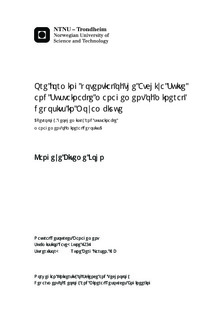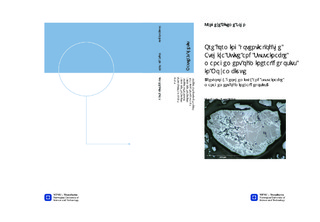| dc.description.abstract | Part 1- Abstract This research study presents detailed petrographic- and geochemical- analysis of 63 rock samples from the Atchiza Suite. The Suite is a layered mafic-ultramafic pluton located in the Tete Suite, of NW Mozambique. At present, the Atchiza comprises a group of three main types of rock that are classified based on their mineralogy, textures, geochemical composition. These are ultramafic cumulates (dunite and pyroxenites), mafic cumulates (medium-grained cumulate gabbro) and coarse-grained gabbro (non-cumulate gabbro). Compared to the rest of other rocks, coarse-grained gabbro shows high enrichment of Ti (0.64-3.46 wt% TiO2), Zr (5.9-296.1 5ppm), Sr (253.7-1268.4ppm) and V (224-952.3ppm), but relatively low depleted in compatible elements (Ni = 48.7-235.7ppm , Cr = below detection limit to 410.5ppm). Cumulate ultramafics are highly enriched in compatible elements (Ni up to 4636.2ppm, Cr up to 4721ppm). A high Mg# in ultramafic cumulates (0.59-0.86) suggests an Mg-rich primitive parental magma, whereas a low Mg# in coarse-grained gabbro (0.23-0.37) suggests a relatively high-differentiated magma. Cumulate gabbro shows Mg# ranging from 0.40-0.72, suggesting a moderately evolved magma source (derivative magma subsequent to fractionation of ultramafic cumulates). The Ni/Zr, Cr/Zr, Sr/Zr and Ti/Zr ratios are generally the lowest in coarse-grained gabbro when compared to cumulate rocks. The same applied; this suggests that coarse-grained gabbros were probably formed from a relatively high-differentiated magmatic liquid. In addition, the presence of an uninterrupted cryptic differentiation trend with these ratios implies that the Atchiza igneous lithologies were derived from one and the same parental melt. Apparently, Atchiza shows great variability of Fe2O3, SiO2 and SO3 during magmatic differentiation. There is significant decrease in Fe2O3, an increased SiO2 and SO3 contents in residual magma during progressive magma fractionation. It is true that all these geochemical changes will lower down the solubility of S in the system, thus providing a favourable condition for silicate-sulfide immiscibility. Theoretically, therefore, the Atchiza may have a potential to host Ni-Cu-(PGE) sulfide deposits. Part 2- Abstract Unlike water and forests, minerals are finite resources; they cannot be replaced back to their natural forms once they are depleted. For that reason, sustainable management of mineral resources is very important so that stakeholders in the extractive sector are guaranteed the same opportunities in sharing benefits. As part of this study, and with respect to Atchiza Suite, this section is discussing sustainable management of mineral deposits in Mozambique. Investment in Mozambican extractive industry should primarily be done with the main objective of poverty reduction for Mozambican citizens. Thus, the Mozambican Government needs to realize that proper management of mineral deposits will provide sufficient income for the country, enough to fund other development projects. Rather than being mismanaged, this massive collection of mineral revenues needs to be appropriately re-invested back to diversify other economic sectors. If this mineral revenue is managed wisely, the national annual budgets will be sufficiently supported. Most importantly, the country’s reliance on international loans and aids will be reduced significantly. Decision-making for development of the country’s mineral projects should not be central-governed; rather it should be transparent to the public and open for opinions and suggestions. As the main stakeholder in Mozambican extractive sector, local communities and civil societal groups should also be given opportunities to participate in decision-making, important for the development of mining projects. Mineral agreements for which the Mozambican State has been signing with multinational companies for development of the country’s mineral projects need to be published and be available publicly. In addition, negotiation of mining agreements must be transparent and involve all stakeholders. Investment and development of the country’s mineral projects must be performed through partnerships and Joint ventures between multinational mining companies, national-based companies and the Mozambican State. Development of mineral deposits must incorporate environmental sustainability. Despite its high mineral potential (e.g. Ni-Cu-PGE-Ti-V), Atchiza also is surrounded by a wide range of other natural resources. The Cahora Bassa Dam, which is located just adjacent to Atchiza Project, is the main source of clean energy not only for Mozambique domestic market, but also for the majority of Sub-Saharan countries. All of these natural resources require good practice of Environmental sustainability in mining activities. | nb_NO |

